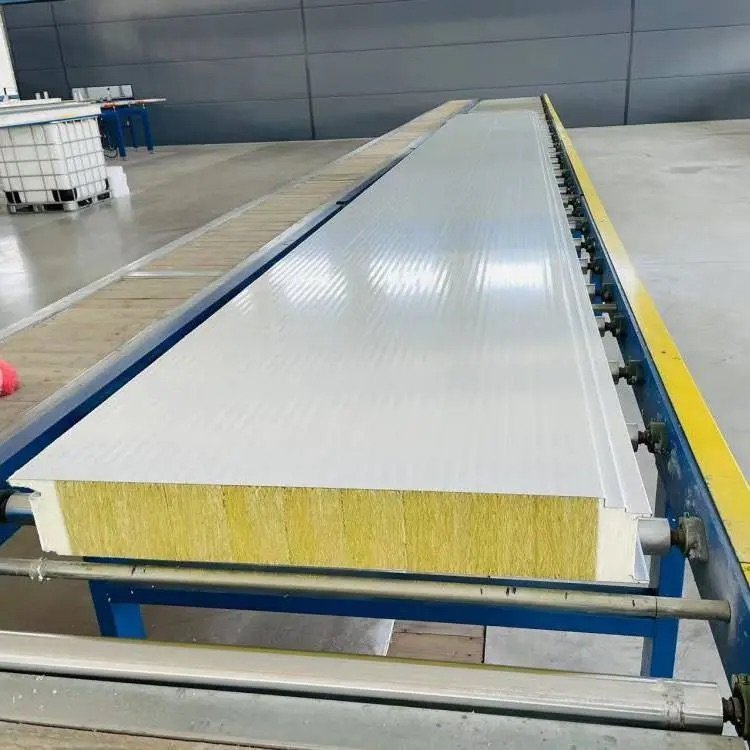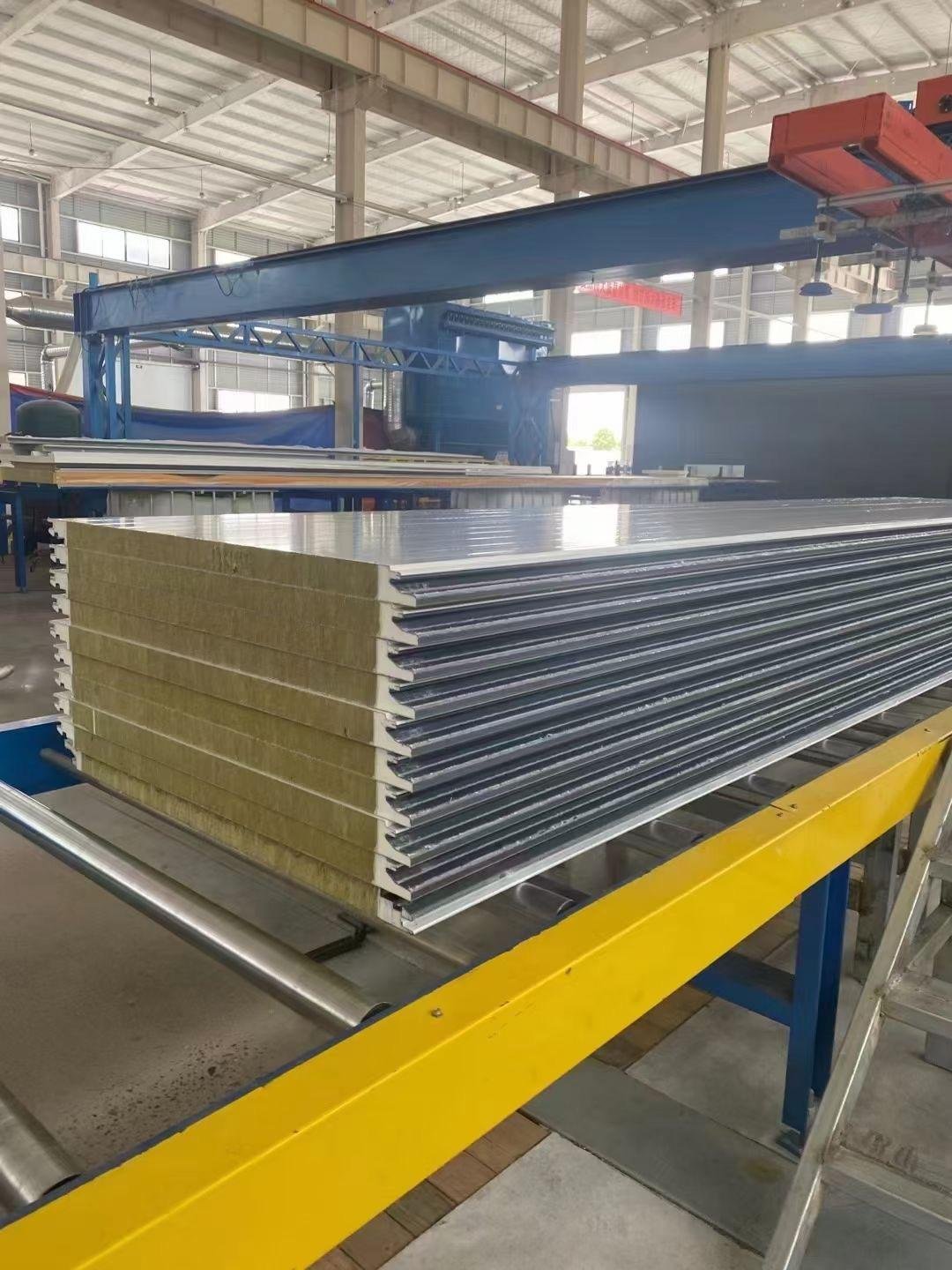
Cutting a sandwich panel can seem tricky without the right approach. I’ve learned that using proper tools and techniques for how to cut sandwich panel makes all the difference. Precision starts with careful preparation. Safety should always come first. When you follow a clear process, you’ll achieve clean cuts and professional results every time when you cut sandwich panel.
Key Takeaways
Measure and mark the sandwich panel carefully. This avoids mistakes and saves material.
Clamp the panel tightly on a steady surface. A stable setup keeps you safe and helps with accurate cutting.
Pick the right tools, like a fine-toothed circular saw for straight lines. Using proper tools makes your work look better.
Tools and Materials for Cutting a Sandwich Panel

Essential tools for cutting sandwich panels
When I cut a sandwich panel, I always start by gathering the essential tools. These tools make the process efficient and ensure clean results. Here’s what I recommend:
Measuring tape for accurate dimensions.
A marker or pencil to clearly mark the cutting lines.
Protective gear like gloves and goggles for safety.
A circular saw with a fine-toothed blade for straight cuts.
A jigsaw for detailed or curved cuts.
A metal file to smooth the edges after cutting.
For thicker sandwich panels, I’ve found the TruTool TPC 165 panel cutter to be a game-changer. It handles panels up to 6.5 inches thick and allows for precise interior cutouts. This tool is perfect for achieving professional results.
Supporting materials for accuracy and stability
Accuracy and stability are key when cutting a sandwich panel. I always use a sturdy workbench or sawhorses to support the panel. Clamps are another must-have. They hold the panel firmly in place, preventing movement during cutting. A straightedge or ruler helps guide the saw for straight cuts. These materials ensure that every cut is precise and safe.
Optional tools for advanced techniques
For advanced techniques, I sometimes explore specialized tools. Hot-pressed sintering tools and spark plasma sintering tools are great for improving cutting performance. Non-contact methods like microwave sintering are also gaining popularity. Optimizing tool design can save time and costs while enhancing tool life. Creating specific cutting condition tables is another way to improve efficiency and surface quality.
Step-by-Step Guide to Cut Sandwich Panel

Step 1: Measure and mark the panel
Accurate measurements are the foundation of a clean cut. I always start by using high-quality measuring tools to ensure precision. Here’s my process for accurate measurements and marking:
Use a reliable measuring tape to measure the dimensions of the sandwich panel.
Double-check the measurements to avoid errors. I follow the rule: measure twice, cut once.
Mark the cutting lines clearly with a sharp pencil or marker. This ensures visibility during the cutting process.
For uniform cuts, I use a stop block to eliminate repeated measuring.
Regularly check that my tools are calibrated and in good condition.
By following these steps, I can confidently measure and mark the panel for cutting.
Step 2: Secure the panel for stability
Stability is crucial when cutting a sandwich panel. I place the panel on a sturdy workbench or sawhorses. Then, I use clamps to hold it firmly in place. This prevents movement during the cutting process, ensuring a clean cut. A stable setup also reduces the risk of accidents, making the process safer.
Step 3: Select the right cutting tool
Choosing the right blade is essential for cutting different types of sandwich panels. I consider several factors when selecting a tool:
A circular saw with a fine-toothed blade works best for straight cuts.
For curved or intricate cuts, I use a jigsaw.
When working with honeycomb sandwich panels, I prefer tools with coated blades. These blades maintain stability under high temperatures and provide a smooth finish.
Discussing my needs with tooling suppliers has helped me find the best tools for specific projects. This step ensures I make the cut with precision.
Step 4: Make the cut with precision
Before cutting, I wear protective gear like gloves and goggles. I align the blade with the marked line and cut slowly to maintain control. For honeycomb sandwich panels, I adjust the speed to avoid damaging the material. Precision is key, so I focus on steady movements and follow the marked line closely.
Step 5: Smooth and finish the edges
After cutting, I inspect the edges for roughness. Using a metal file, I smooth out any imperfections. This step gives the panel a professional finish. For honeycomb panels, I take extra care to preserve the integrity of the material. A clean edge not only looks better but also ensures the panel fits perfectly in its intended space.
Safety Tips for Cutting a Sandwich Panel
Wear protective gear
I always prioritize safety when cutting a sandwich panel. Wearing protective gear is essential to avoid injuries. I use safety goggles to shield my eyes from flying debris. Gloves protect my hands from sharp edges and accidental contact with the blade. A dust mask is helpful when working with materials that produce fine particles. These precautions ensure I stay safe throughout the cutting process.
Ensure a stable and safe workspace
A stable workspace is critical for clean cuts and accident prevention. I follow these steps to create a safe environment:
Wear protective gear to safeguard against potential injuries.
Secure the sandwich panel firmly with clamps to prevent movement during cutting.
Use appropriate tools, such as a fine-toothed blade, to ensure clean cuts and avoid damaging the material.
I always work on a sturdy surface, like a workbench or sawhorses, to keep the panel steady. Good lighting helps me see the cutting lines clearly. These measures make the workspace safe and efficient.
Handle tools carefully and follow instructions
Handling tools with care is vital for precision and safety. I read the manufacturer’s instructions for each tool before starting. When using a circular saw or jigsaw, I grip the tool firmly and align the blade with the marked line. I cut slowly to maintain control and avoid mistakes. After finishing, I inspect the tools for wear and tear. Proper handling and maintenance ensure the tools perform well and last longer.
Common Mistakes When Cutting a Sandwich Panel
Using inappropriate tools
Using the wrong tools can ruin the cutting process. I’ve learned that not all tools work well with a sandwich panel. For example, using a blade that’s too coarse can tear the material instead of slicing it cleanly. A dull blade can also cause uneven edges. I always choose a fine-toothed blade for straight cuts and a jigsaw for curves. When working with thicker panels, I rely on specialized tools like the TruTool TPC 165. Selecting the right tool ensures the sandwich panel stays intact and the cut looks professional.
Rushing through the process
Rushing often leads to mistakes. I’ve seen how skipping steps like measuring or securing the panel can result in uneven cuts. Cutting too quickly can also damage the material or cause the blade to veer off the marked line. I always remind myself to slow down and follow each step carefully. Taking my time helps me achieve precise cuts and avoid wasting materials. The saying “measure twice, cut once” has saved me from many errors.
Ignoring safety precautions
Ignoring safety measures can lead to accidents. I’ve made it a habit to wear protective gear like gloves and goggles every time I cut a sandwich panel. Working without clamps to secure the panel is another common mistake. A moving panel increases the risk of injury and makes cutting less accurate. I also ensure my workspace is well-lit and free of clutter. Following these precautions keeps me safe and helps me focus on making clean, precise cuts.
Cutting sandwich panels becomes simple with the right approach. I always follow these steps to ensure success:
Measure and mark the panel accurately to avoid wasting material.
Secure the panel with clamps to keep it stable.
Use a fine-toothed circular saw blade for clean, precise cuts.
Maintain a consistent cutting speed to protect the material’s integrity.
Smooth the edges with a metal file for safe handling.
By following this process, I achieve professional results every time. Take your time, stay safe, and enjoy the satisfaction of a job well done!
FAQ
What is the best tool for cutting straight lines on a sandwich panel?
I recommend using a circular saw with a fine-toothed blade. It ensures clean, straight cuts and works well for most sandwich panel types.
What should I do if the edges of the panel are rough after cutting?
Use a metal file to smooth the edges. This step improves the finish and ensures the panel fits perfectly in its intended space.
What safety gear is essential when cutting sandwich panels?
Always wear safety goggles, gloves, and a dust mask. These protect your eyes, hands, and lungs from debris and sharp edges during the cutting process.







